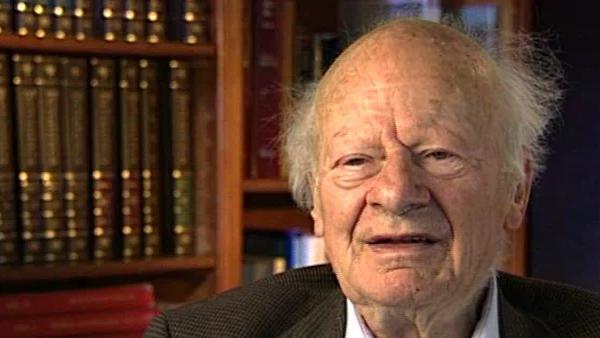NEXT STORY

Ray Davis's method of proving neutrinos come from the sun
RELATED STORIES

NEXT STORY

Ray Davis's method of proving neutrinos come from the sun
RELATED STORIES


|
Views | Duration | |
|---|---|---|---|
| 141. The formation of binary neutron stars | 232 | 01:52 | |
| 142. The statistics of masses of neutron stars | 226 | 01:57 | |
| 143. An upper limit to the mass of a neutron star | 273 | 01:47 | |
| 144. Condensation of K-minus mesons | 213 | 02:59 | |
| 145. How to observe a neutrino | 239 | 02:35 | |
| 146. Trying to observe neutrinos from the sun | 219 | 04:07 | |
| 147. Ray Davis's method of proving neutrinos come from the sun | 206 | 01:55 | |
| 148. How the Kamiokande experiment worked | 213 | 02:26 | |
| 149. Comparing the Kamiokande and Homestake experiments | 285 | 03:01 | |
| 150. Stanislav Mikheyev and Alexi Smirnov's theory | 237 | 02:54 |


All this had been investigated by Willy Fowler and his collaborators at Cal Tech. All... he investigated all nuclear reactions which would possibly occur in the stars, experimentally by using an accelerator, and so we knew all these. So it was the idea of Willy Fowler and his student John Bahcall, that maybe one could observe the neutrinos that are made in the sun. I should mention in this connection that actually I believe the first person who had this idea was Pontecorvo, a former collaborator of Fermi's in Rome who was involved in Fermi's study of neutron absorption in nuclei. But, at any rate, Bahcall was the person who kept the ball and investigated this in more detail and came to the conclusion that indeed it probably would be possible to observe neutrinos from the sun. There would be many of them, but of course we knew the cross section was extremely small but there were some of relatively high energy and the cross section of neutrinos interacting increases with the energy very rapidly. So an experiment was set up by Ray Davis at Brookhaven National Laboratory, to observe the solar neutrinos by... he got a tank... car full of cleaning fluid, a carbon, chlorine, hydrogen compound, and chlorine contains one isotope, chlorine-37, which by absorbing a neutrino can transform into argon-37 which is a radioactive nucleus, a neutrino goes in and an electron goes out. You can't observe that electron, it's too weak, but you can observe the argon-37. Unfortunately that again doesn't emit very energetic radiation but it does capture its orbital electrons and then emits a converging gamma ray after such... such capture, and so you get from this X-rays of a few KeVs. These X-rays come out with the decay time of argon-37, which I think is something like a month, and so what Davis set out to observe was these electrons.
The late German-American physicist Hans Bethe once described himself as the H-bomb's midwife. He left Nazi Germany in 1933, after which he helped develop the first atomic bomb, won the Nobel Prize in Physics in 1967 for his contribution to the theory of nuclear reactions, advocated tighter controls over nuclear weapons and campaigned vigorously for the peaceful use of nuclear energy.
Title: Trying to observe neutrinos from the sun
Listeners: Sam Schweber
Silvan Sam Schweber is the Koret Professor of the History of Ideas and Professor of Physics at Brandeis University, and a Faculty Associate in the Department of the History of Science at Harvard University. He is the author of a history of the development of quantum electro mechanics, "QED and the men who made it", and has recently completed a biography of Hans Bethe and the history of nuclear weapons development, "In the Shadow of the Bomb: Oppenheimer, Bethe, and the Moral Responsibility of the Scientist" (Princeton University Press, 2000).
Tags: Caltech, Brookhaven National Laboratory, William Fowler, Willy Fowler, John Bahcall, Bruno Pontecorvo, Raymond Davis
Duration: 4 minutes, 7 seconds
Date story recorded: December 1996
Date story went live: 24 January 2008